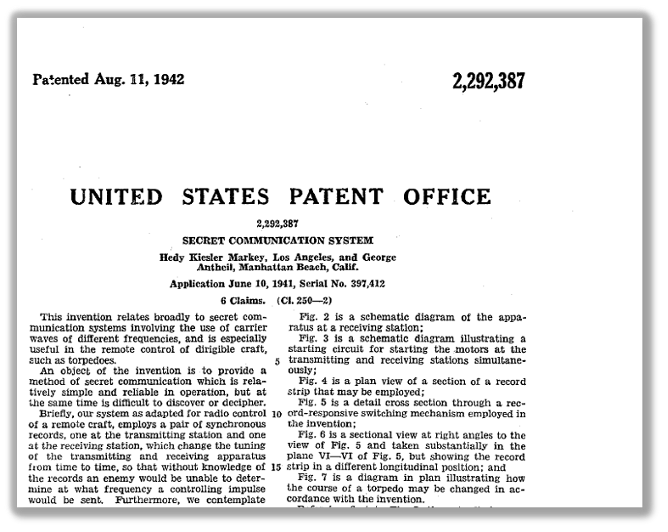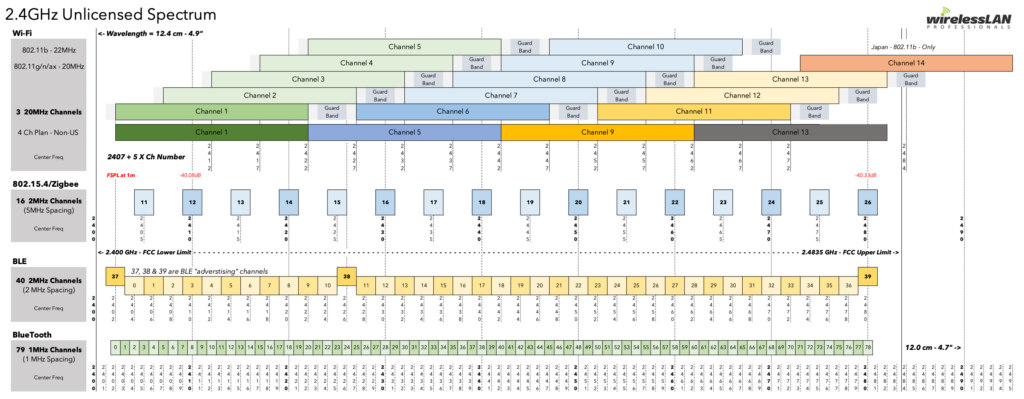The Mother of Wi-Fi: Hedy Lamarr’s Contributions to Technology
Heidi Lamarr was a glamorous and stylish actress from the golden aga of cinema and a regular on the red carpets. She was also a brilliant thinker who laid the foundation for modern wireless communication, including Wi-Fi. Plot twist! This isn’t just an overblown script pitch—this is the true story of Hedy Lamarr, the mother of Wi-Fi.
From Screen to Spectrum: The Genius of Hedy Lamarr
Hedy Lamarr, born Hedwig Kiesler on November 9th, 1914, in Vienna, was not only an acclaimed actress but also a prolific inventor with a knack for engineering. She once held a patent for a technology that seemed more suited to a James Bond movie than reality. She invented a secret communication system in 1941—something known as “frequency hopping.” You might be wondering what a glamorous movie star was doing fiddling around with advanced communication techniques during World War II. Well, when Hedy wasn’t busy being declared the most beautiful woman in film, she was helping to change the future of wireless communication.

Frequency Hopping: Solving a Problem with a Piano
The technical idea behind Hedy’s invention—frequency hopping—was simple enough in principle but ingeniously applied. During WWII, torpedoes were primarily guided via radio signals. The trouble was that enemy forces could easily jam these signals, causing torpedoes to go off course. Collaborating with composer George Antheil, who had a special talent for synchronizing multiple player pianos, they came up with a method of rapidly switching communication frequencies to prevent jamming.
Imagine you’re in a room full of toddlers, all armed with toy xylophones, making a cacophony of noise. Now, suppose you and your friend decide to have a secret musical conversation by only playing certain notes at certain times, skipping to different notes quickly and unpredictably. Even amidst the din, your friend could receive your messages because they know the exact sequence of changes—everyone else would be left guessing, or just plain confused. That’s frequency hopping in a nutshell: pseudo randomly switching channels so fast that no one can keep up or interfere.
Hedy and George received a patent for their invention in 1942, which they gifted to the U.S. Navy. Unfortunately, it wasn’t used during the war—the Navy shelved it until much later. Little did they know, Hedy’s pioneering work would become fundamental to modern communication technologies like Wi-Fi, Bluetooth, and GPS.

The Wi-Fi Standard: A Historical Hop, Skip, and Jump
Fast forward to 1997, when the IEEE released the original 802.11 Wi-Fi standard—heavily relying on the concepts Hedy developed decades earlier. The 802.11 standard featured several methods for managing wireless communication, including Frequency Hopping Spread Spectrum (FHSS), Direct Sequence Spread Spectrum (DSSS), and even infra-red (IR) communication.
FHSS, the direct descendant of Hedy’s frequency hopping, divided the available frequency spectrum into several channels and rapidly hopped between them according to a pseudorandom sequence. It was like playing musical chairs with radio frequencies—as long as you knew the sequence, you could stay in tune. DSSS, on the other hand, spread the signal over a wider band using a pseudo-noise code, which made it more resilient to interference and eavesdropping. Think of it as trying to spread peanut butter over an entire loaf of bread rather than a single slice. Meanwhile, IR communication was just like using a TV remote—pointing and clicking light at a target—which seems quaint now but was a real contender in the early wireless game.
The Fabulous (and Flawed) Frequency Hopping
FHSS had its fair share of perks and pitfalls. Let’s break it down:
1. Throughput: Throughput wasn’t exactly FHSS’s strong suit. Since the system kept hopping around like a jittery squirrel, it was hard to make the most efficient use of the available spectrum. FHSS was a little bit like trying to read a book by flashing a strobe light—possible, but not exactly ideal. Whenever the signal was hopping, or the strobe light was off, no data could be transferred. Data could only be exchanged during the dwell time when the signal remained on a channel, or the strobe light was on. If you wanted blazing fast speed, this was not to path to take.
2. Interference Avoidance: On the flip side, FHSS was brilliant for interference avoidance. If someone tried to jam your signal, they’d have to be as fast and unpredictable as you—and nobody likes competing with jittery squirrels. This feature made FHSS especially attractive for early Wi-Fi networks, which had to deal with various sources of interference (think microwaves, cordless phones, and probably even your blender).
3. Spectral Density: Spectral density refers to how much energy you can fit into a particular slice of the radio spectrum. With FHSS, the energy was spread across the band by hopping around, which meant it had a relatively low spectral density compared to techniques like DSSS. Imagine trying to light up a football field with a pocket flashlight versus a laser pointer. FHSS would be like trying to light up the field with a laser pulsing 1600 times a second pseudo randomly across field hoping to be fast enough – giving the illusion of a lit-up field. DSSS is more like using the flashlight at the 50 yard line (channel 6) at max power hoping all the clients at the football field are covered.
4. Spectral Efficiency: As far as spectral efficiency goes, FHSS was not the star of the show. By frequently hopping, it didn’t make as efficient use of available spectrum as some other methods. DSSS, which used more advanced coding techniques, offered a better way of cramming data into those precious radio waves.

FHSS in Bluetooth
Bluetooth, like Wi-Fi, also took advantage of frequency hopping. Bluetooth’s implementation of FHSS is known as Adaptive Frequency Hopping (AFH). In Bluetooth, the 2.4 GHz ISM (Industrial, Scientific, and Medical) band is divided into 79 channels, each 1 MHz wide. Devices using Bluetooth communicate by hopping between these channels up to 1,600 times per second. The rapid hopping reduces the likelihood of interference, particularly in environments where multiple wireless devices are competing for the same spectrum.

Bluetooth’s AFH adds another layer of sophistication. Unlike traditional FHSS, which blindly hops across all available channels, AFH actively monitors the quality of each channel. If a particular channel is experiencing a lot of interference—say, from a nearby Wi-Fi network or a microwave oven—Bluetooth can adapt by excluding that channel from its hopping sequence. This helps to improve overall communication reliability and maintain connection quality, even in congested environments.
By dynamically adjusting its hopping pattern, Bluetooth can avoid heavily used frequencies while still benefiting from the interference resilience of FHSS. This is particularly important in environments like call centers or conference centers, where there could be a high density of Bluetooth and Wi-Fi devices operating concurrently.
Hedy’s Legacy Lives On
FHSS eventually fell out of favour as more advanced methods of spectrum management and data encoding came along, but its principles remain foundational. Hedy’s brainchild paved the way for DSSS, OFDM, and OFDMA – the more advanced forms of spread-spectrum technology we use today in both Wi-Fi and cellular communication.
Think about that next time you’re binge-watching a show over Wi-Fi. Hedy Lamarr wasn’t just a pretty face on the screen—she was also one of the brilliant minds that made Wi-Fi possible. Despite facing challenges that came from stereotypical views of women, especially women in Hollywood, Hedy’s tenacity and genius made her a true trailblazer in technology.
So, here’s to Hedy Lamarr— Slàinte – the unlikely “mother of Wi-Fi”. However, let’s not forget, Bluetooth is the dominant technology still leveraging her contribution. You might not be able to thank her in person, but you can celebrate her every time you stream audio to your wireless headphones.
If you are hungry for more details around the development of frequency hopping technology and learn about additional contributions from other researchers and scientists, click on this article written by Tony Rothman, published by American Scientist – “Random Paths to Frequency Hopping.”
Slàinte Mhath!
Resources
802.11 “Prime” – original standard from 1997
https://standards.ieee.org/ieee/802.11/1163
802.11-2020 – Wireless LAN Medium Access Control (MAC) and Physical Layer (PHY) Specifications
https://ieeexplore.ieee.org/document/9363693
Bluetooth Core Specification Version 6.0 from Bluetooth SIG (Special Interest Group)
https://www.bluetooth.com/specifications/specs/core60-html
Random Paths to Frequency Hopping, by Tony Rothman via American Scientist
https://www.americanscientist.org/article/random-paths-to-frequency-hopping
Bombshell – The Hedy Lamarr Story – Official Trailer